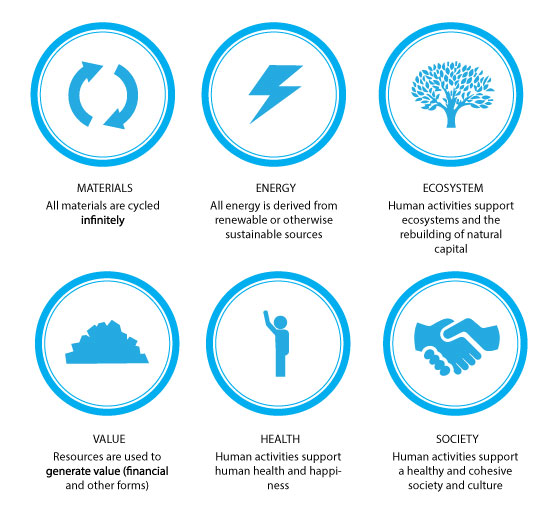In 2012 McKinsey & Company wrote a paper on the Circular Economy which has since been adopted by many organisations. It wasn't a new concept, but it was highlighted and brought to life. In essence the definition of this framework is about closing resource loops so that the way organisations and society function are copying natural ecosystems. The six principles for a successful circular economy can be seen in the image below.
This model represents a paradigm shift in the way products are designed, made, sold and consumed. The CE model moves the economy from a linear model where products are made, consumed and disposed of, to one where resources are reused. This way businesses bypasses rising commodity prices, and huge amounts of resource wastage which ultimately end up in landfill. As such, it is a win win situation where less is spent on the finite resources, costs are lower and businesses are more sustainable.
As a simple case in point, we can look at Veolia, the company which keeps the London streets clean and collects our rubbish. They are working closely with whiskey distilleries to collect ash from the biomass boiler which is rich in phosphate which is an important material used to produce fertilisers. If successful, this will create an opportunity to explore other nutrient rich waste streams, and as a result develop more sustainable waste solutions.
A nice video which depicts the CE concept simply can be seen below.
